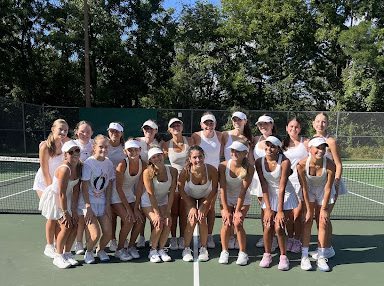Mandarin Class: Chinese Acrobats Performance at COD
Students taking West’s Mandarin course had the opportunity to see a unique performance at the College of Dupage featuring Chinese acrobats coming all the way from Beijing.
Students enrolled in the Mandarin course at West were given the opportunity to watch Chinese acrobats perform at the College of DuPage recently. The performance, titled “Peking Dreams,” lasted about an hour and a half with different types of acrobatic tricks featured in the performance. Made up of forty five members, The National Circus and Acrobats of the People’s Republic of China showed off astounding tricks and stunts throughout their show incorporating a little bit of history along the way.
The students were also given the chance to attend a forty-five minute talk about the history of acrobatics with COD’s very own Chinese language Professor and Study Abroad Assistant Director.
Chinese acrobatics are dated back to 2,000 years ago with the first records of acrobatic practices occurring during the Qin Dynasty (225-207 BC), although many believe the practice began as much as 3,000 years ago. The art style was most likely developed with common people rather than in imperial courts. While it was not a high-paying job, the income was enough to help support a family. Following tradition, families would pass down their tricks and ideas to close relatives generally making most acrobatic troupes a family operated group.
Today, the art of acrobatics is open to many people in China with basic training beginning as early as age four and more in-depth training beginning at age eight. These years of training last for a long time with performers really starting their careers in their mid-teens although there are a few exception to this. An acrobat will also only perform for about twenty some years and afterwards will become teachers, choreographers, or pursue another career.
Performances incorporate many different styles and types of acrobatics including balancing, tumbling, dancing, flexibility, hoop-diving, contortions, and dragon dancing. A few of the these types, such as balancing, hoop-diving, flexibility and strength, and contortions, were demonstrated in the performance that the Mandarin students were able to see.
Mandarin 4 AP student, Abby Moody, comments, “I thought it was really cool to see the contortionists and how flexible they were.”
Chinese contortionists use their body to bend into unnatural shapes in order to convey the mood of a scene or musical piece. In the performance, music played in the background and the contortionists made smooth, slow movements to fit the style of the music.
Another student, Mandarin 3H Katie Rohrer says, “I really enjoyed the history of acrobats before the show even started! But my favorite part during the show was when the acrobats jumped through high hoops.”
The hoop-diving acrobats used magnetically attached hoops stacked on top of each and jumped through them performing stunt moves similar to tumbling as they leaped through the hoops. The hoops came in varying sizes, some barely large enough to fit a body through them and every acrobat consistently jumped through them.
“Other than learning about the history of acrobats in China, as a gymnast I was fascinated by how far some of the acrobats can push the capabilities of the human body,” states Paul Bonokollie, a Mandarin 3H student, “I have always been interested in Chinese culture, and Mandarin class lives up to my expectations allowing me to learn about the vast interesting history, traditions and festivals.”
With their flamboyant and elegant costumes, the culture of the old village of Peking and the Forbidden City was portrayed in a number of scenes, each one integrating different styles of acrobatics. The performance featured traditional Chinese music enriching the whole experience.

Male acrobats perform Straw Hat Juggling comically depicting the festivities of a marriage celebration in the old Peking village.
Mandarin Teacher, Mrs. Tsou, or more commonly known by her students, Lăoshī (老师), says, “I could tell my students many stories about China, about Chinese culture and food, but it would not be as authentic unless they see the performance themselves. I truly believe this is an eye-opening opportunity for everyone. I had grown up and trained to be a professional performer since the age of 10 so I can totally understand how it works, but for someone who only heard about the stories, the real life experience is much more believable.”
The chance to see Chinese acrobats perform was a neat experience for the Mandarin students and allowed them to see a unique side of Chinese cultural. After experiencing it, they were able to take what they learned and applied it in their classes at school sharing their opinions on the performance. It was truly an authentic and great opportunity for the students!

Emma Blackwell is senior at West and is both the Editor-in-Chief of The Glen Bard and a columnist. Her main column is called "Artist's Corner" and covers...








